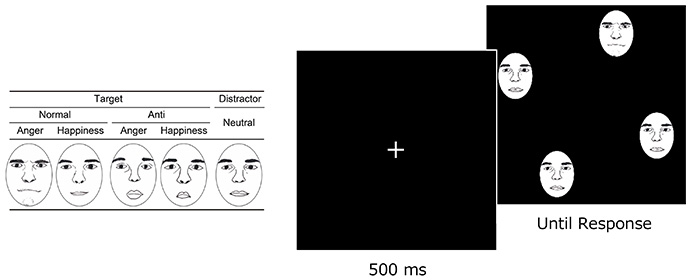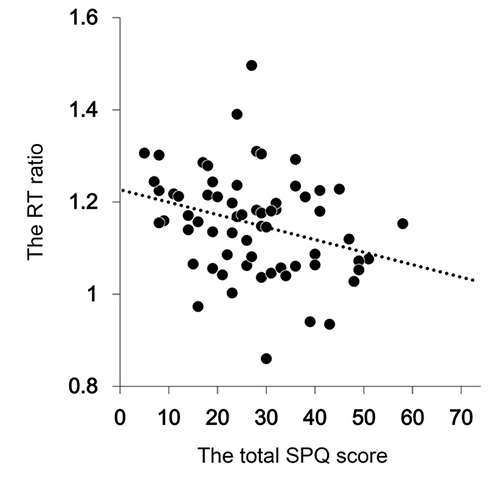SATO Wataru Laboratory
Schizotypy is associated with difficulties detecting emotional facial expressions
(Uono, Sato, Sawada, Kawakami, Yoshimura, & Toichi: R Soc Open Sci)
People with schizophrenia or sub-clinical schizotypal traits exhibit impaired recognition of facial expressions.
However, it remains unclear whether the detection of emotional facial expressions is impaired in people with schizophrenia or high levels of schizotypy.
The present study examined whether the detection of emotional facial expressions would be associated with schizotypy in a nonclinical population after controlling for the effects of IQ, age, and sex.
Participants were asked to respond to whether all faces were the same as quickly and as accurately as possible following the presentation of angry or happy faces or their anti-expressions among crowds of neutral faces.
Anti-expressions contain a degree of visual change that is equivalent to that of normal emotional facial expressions relative to neutral facial expressions and are recognised as neutral expressions.

Normal expressions of anger and happiness were detected more rapidly and accurately than their anti-expressions.
Additionally, the degrees of overall schizotypy were negatively correlated with the effectiveness of detecting normal expressions versus anti-expressions.
An emotion recognition task revealed that the degree of positive schizotypy was negatively correlated with the accuracy of facial expression recognition.

These results suggests that people with high levels of schizotypy experienced difficulties detecting and recognising emotional facial expressions.
Return to
Recent Research.
Return to
Main Menu.

